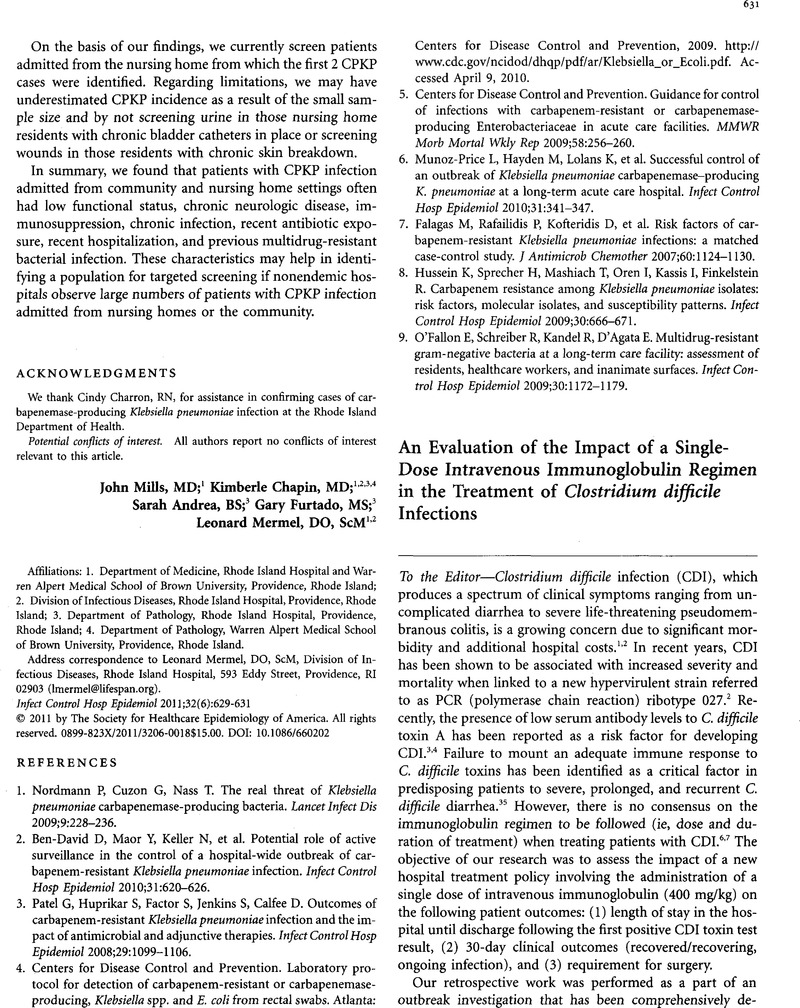Crossref Citations
This article has been cited by the following publications. This list is generated based on data provided by Crossref.
Bassetti, Matteo
Villa, Giovanni
Pecori, Davide
Arzese, Alessandra
and
Wilcox, Mark
2012.
Epidemiology, diagnosis and treatment ofClostridium difficileinfection.
Expert Review of Anti-infective Therapy,
Vol. 10,
Issue. 12,
p.
1405.
DuPont, Herbert L.
2013.
Diagnosis and Management of Clostridium difficile Infection.
Clinical Gastroenterology and Hepatology,
Vol. 11,
Issue. 10,
p.
1216.
DuPont, Herbert L
2014.
Challenges and opportunities in the management ofClostridium difficileinfection.
Expert Review of Gastroenterology & Hepatology,
Vol. 8,
Issue. 8,
p.
863.
Zhao, Song
Ghose-Paul, Chandrabali
Zhang, Keshan
Tzipori, Saul
and
Sun, Xingmin
2014.
Immune-based treatment and prevention ofClostridium difficileinfection.
Human Vaccines & Immunotherapeutics,
Vol. 10,
Issue. 12,
p.
3522.
To, Kathleen B.
and
Napolitano, Lena M.
2014.
Clostridium difficile Infection: Update on Diagnosis, Epidemiology, and Treatment Strategies.
Surgical Infections,
Vol. 15,
Issue. 5,
p.
490.
Wang, J.
McQuilten, Z.K.
Wood, E.M.
and
Aubron, C.
2015.
Intravenous immunoglobulin in critically ill adults: When and what is the evidence?.
Journal of Critical Care,
Vol. 30,
Issue. 3,
p.
652.e9.
Trubiano, J. A.
Cheng, A. C.
Korman, T. M.
Roder, C.
Campbell, A.
May, M. L. A.
Blyth, C. C.
Ferguson, J. K.
Blackmore, T. K.
Riley, T. V.
and
Athan, E.
2016.
Australasian Society of Infectious Diseases updated guidelines for the management of Clostridium difficile infection in adults and children in Australia and New Zealand.
Internal Medicine Journal,
Vol. 46,
Issue. 4,
p.
479.
Constantine, Roy H.
2017.
Distracted Doctoring.
p.
189.





